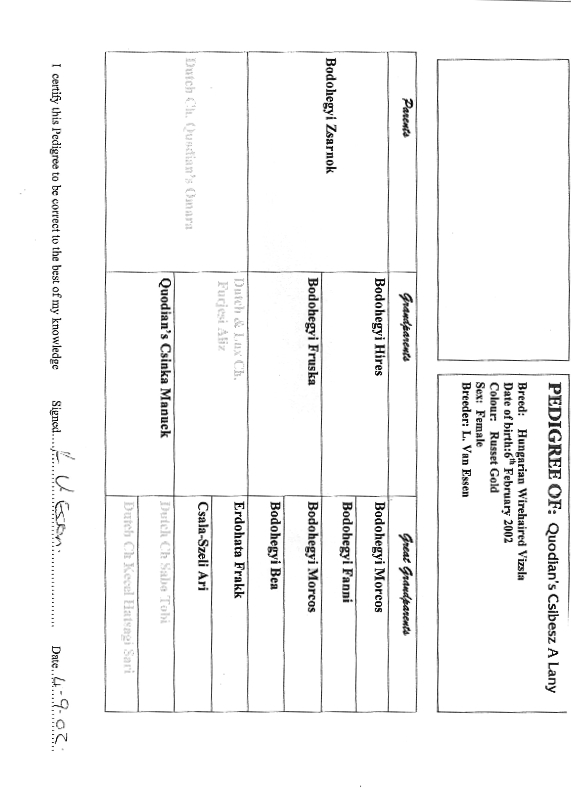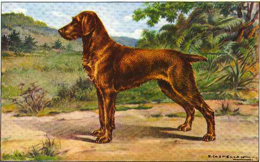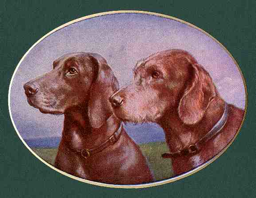Origins
of the HWV
It is thought that the Vizsla is probably a descendant of the yellow Turkish hunting dog, that travelled with Magyar hunters across Europe and settling in Hungary about one thousand years ago. The hunters cross bred their dogs with local dogs to produce a better hunting dog.
It is thought that the Vizsla is probably a descendant of the yellow Turkish hunting dog, that travelled with Magyar hunters across Europe and settling in Hungary about one thousand years ago. The hunters cross bred their dogs with local dogs to produce a better hunting dog.
In the
1930’s the Hungarian hunters identified the need
for a more robust dog that could weather the harsh
winters. However, they recognised that although the
dog should be more resistant to the cold weather
and harsh conditions it still needed to retain the
hunting capabilities of the Vizsla.
Two
Vizsla bitches were mated with a German Wirehaired
Pointer and this was the beginning of the Hungarian
Wirehaired Vizsla (HWV).
This breeding program was initiated by Vasaf Josef and later joined by Gresznorik Lazslo. Over subsequent years bloodlines from the Pudelpointer, Irish Setter and possibly Bloodhound were added. This has resulted in the breed as we know it today – A sturdy, robust, medium-sized dog with a harsh wiry coat and a calm temperament – a loyal companion with the ability to work.
This breeding program was initiated by Vasaf Josef and later joined by Gresznorik Lazslo. Over subsequent years bloodlines from the Pudelpointer, Irish Setter and possibly Bloodhound were added. This has resulted in the breed as we know it today – A sturdy, robust, medium-sized dog with a harsh wiry coat and a calm temperament – a loyal companion with the ability to work.

Click HERE to view the Kennel Club Breed Standard
© Francois Cattelan - France
© Carl
Reichert - Austria c. 1918-1924

